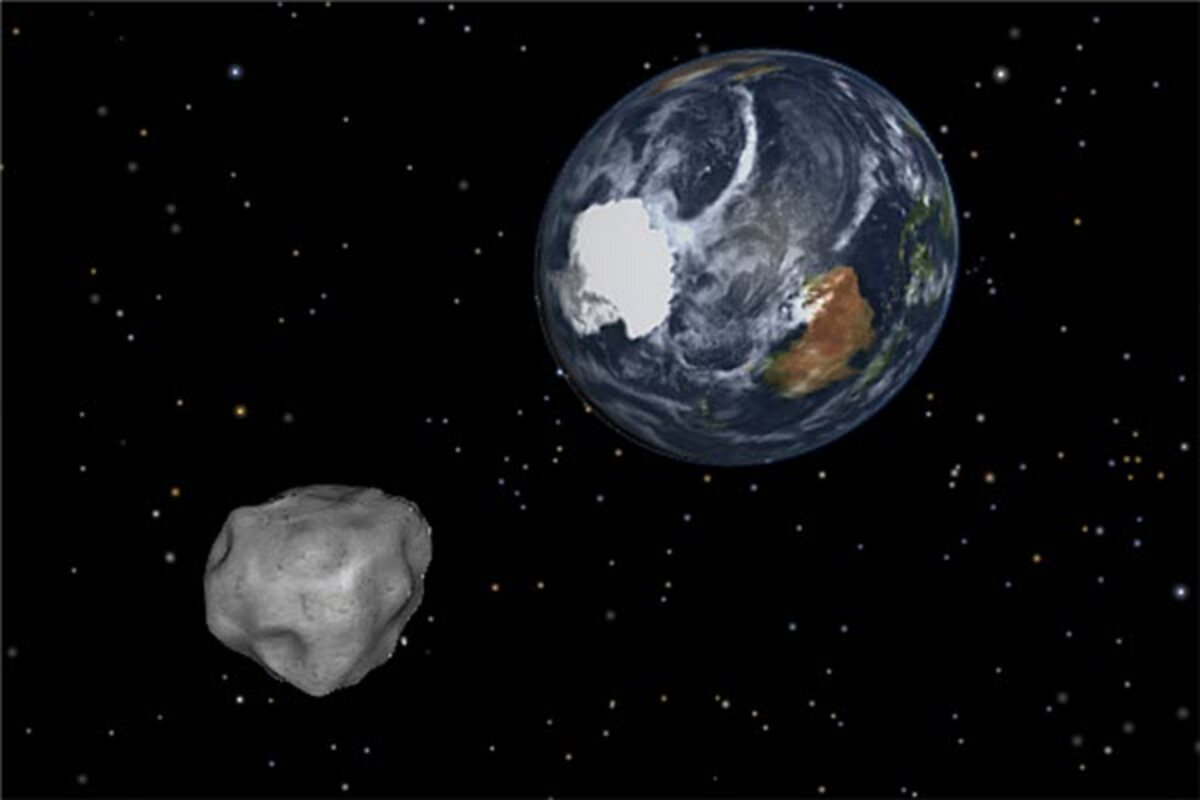Cosmic crash 2022: Space probes will smash into asteroid in nine years
Loading...
| THE WOODLANDS, Texas
Scientists in Europe and the United States are moving forward with plans to intentionally smash a spacecraft into a huge nearby asteroid in 2022 to see inside the space rock.
The ambitious European-led , or AIDA, is slated to launch in 2019 to send two spacecraft — one built by scientists in the U.S, and the other by the European Space Agency — on a three-year voyage to the asteroid Didymos and its companion. Didymos has no chance of impacting the Earth, which makes it a great target for this kind of mission, scientists involved in the mission said in a presentation Tuesday (March 19) here at the 44th annual Lunar and Planetary Science Conference.
Didymos is actually a binary asteroid system consisting of two separate space rocks bound together by gravity. The main asteroid is enormous, measuring 2,625 feet (800 meters) across. It is orbited by a smaller asteroid ��about 490 feet (150 m).
The Didymos asteroid setup is an intriguing target for the AIDA mission because it will give scientists their first close look at a binary space rock system while also yielding new insights into ways to deflect dangerous asteroids that could pose an impact threat to the Earth.��
"Binary systems are quite common," said Andy Rivkin, a scientist at Johns Hopkins' Applied Physics Laboratory in Laurel, Md., working on the U.S. portion of AIDA project. "This will be our first rendezvous with a binary system."
In 2022, the will be about 6.8 million miles (11 million km) from the Earth, during a close approach, which is why AIDA scientists have timed their mission for that year.
Rivkin and his colleagues at Johns Hopkins' Applied Physics Laboratory are building DART (short for Double Asteroid Redirection Test), one of the two spacecraft making up the tag team AIDA mission. Like its acronym suggests, the DART probe crash directly into the smaller Didymos asteroid while travelling at 14,000 mph (22,530 km/h), creating a crater during an impact that will hopefully sending the space rock slightly off course, Rivkin said.
The European Space Agency is building the second AIDA spacecraft, which is called the Asteroid Impact Monitor (or AIM). AIM will observe the impact from a safe distance, and the probe's data will be used with other data collected by telescopes on Earth to understand exactly what the impact did to the asteroid.
"AIM is the usual shoebox satellite," ESA researcher Jens Biele, ��who works on the AIM spacecraft, said. "It's nothing very fancy."
AIDA scientists hope their mission will push the smaller Didymos asteroid off course by only a few millimeters. The small space rock orbits the larger, primary Didymos asteroid once every 12 hours.
The goal, Rivkin said, is to use the DART impact as a testbed for the most basic : a direct collision with a spacecraft. ��If the mission is successful, it could have implications for how space agencies around the world learn how to deflect larger, more threatening asteroid that could pose a threat to Earth, he added.
At the moment, AIDA researchers are not sure of the exact composition of the Didymos . They could just be a loose conglomeration of rocks travelling together through the solar system, or made of much denser stuff.
But once DART impacts the asteroid, scientists will be able to measure how much the asteroid's orbit is affected as well as classify its surface composition, Rivkin said. And by studying how debris floats outward from the impact site after the crash, researchers could also better prepare for the conditions astronauts may encounter during future manned missions to asteroids — such as NASA's project to send , he added.
The AIDA mission's AIM space craft is expected to cost about 150 million euros (about $194 million), while the DART spacecraft is slated to cost about $150 million, mission officials said.
Follow Miriam Kramer����and��. Follow us��,����and��. Original article on��
Copyright 2013 , a TechMediaNetwork company. All rights reserved. This material may not be published, broadcast, rewritten or redistributed.




